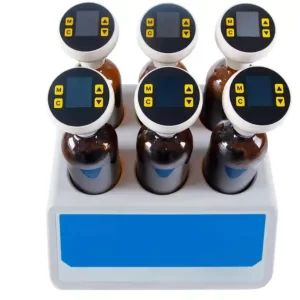Data science is an emerging field of science that has multiple aspects – for one, it studies and examines a huge amount of data; for another, its branches extend in almost every field.
The data we work on is not simple; it is complex data that is structured in many layers. Data science is founded on three main components, and they are statistics, mathematics, and programming language.
Artificial intelligence encapsulates the concepts of all three fields and acts as the machinery or brain of data science. Data science uses techniques, procedures, algorithms, rules, and tools from all these three components and works as a unified mechanism to solve the complex problems that arise in the world around us.
What Drives Data Science?
As the name says, the world of data science revolves around data. Data is a chunk of information that holds knowledge within a single unit, whereas data science uses mathematical algorithms, rules, and artificial intelligence in dealing with the collection, refining, aligning, storage, manipulation, and utilization of data. The entire idea is to perform result-driven calculations on the data to get insights for business and research. (Blei and Smyth, 2017)
Why do We Need Data Science?
From business to the health industry, science to our everyday lives, marketing to research, in fact, for everything in a fraternity, data is required to thrust the movement forward. Computer science and information technology have taken over our lives, and it is advancing with each passing day with such velocity and variety that the operational techniques used a few years back have now become obsolete.
The same is the case with challenges and problems. The problems and concerns of the past for a specific theme, illness, or shortfall may not be the same today as they have advanced in terms of complexity.
Every field of science and study or organization, therefore, needs an updated set of operational systems and technology to keep up with the challenges of today and tomorrow as well as to derive solutions for unanswered questions.
Data Science for Business
Data science is changing the course of the action plan of business procedures and plans. It is solving intricate problems with the help of technology. Data science provides the inside knowledge, which is derived from the big data after the processes of extraction and the information. This information is sometimes collected from the ongoing sources within the system, and most of the time, it is mined from external sources.
Data is the key component for every business, as businesses need it to analyze their current scenario based on past facts and performance and make decisions for future challenges. They need data to survive in today’s competitive market and mature their decision-making power, which would enhance their productivity and profitability. Today, data science is the requirement of every business to make business forecasts and predictions based on facts and figures, which are collected in the form of data and processed through data science.
The influence of data science on business will be based on the understanding of the critical information given as input to the system because the decisions are based on those results. Data science provides resolutions for challenges that are crucial for business decisions as the future of the business is based on them. Data science is important for marketing promotions and campaigns as it has offered the essence of needs and wants in the form of trends and consumer behaviors in a competitive market at the right time for the right consumer. (Grabowski and Rappsilber, 2019)
Data Science for Medical Research
Data science is necessary for research and analysis in health care, which makes it easier for practitioners in both fields to understand the challenges and extract results through analysis and insights proposed based on data. The medical science industry also thrives on data science as it has also provided solutions for long-standing complexities. In recent years, there has been an immense increase in deadly disease outbreaks and new fatal viruses due to pollution, unsafe and unhealthy practices, and improper diet, etc.
Medical science, through advanced technology, has been able to predict the anticipated troubles which would possibly arise in patients, and treatments have been designed in advance to alter the course of the disease. The advanced technology of machine learning and artificial intelligence has been infused into the field of medical science to conduct biomedical and genetic research more easily. The analysis of the research is driven by big data, and it has helped scientists to develop replica models of human DNA. This DNA modeling is assisting in understanding the configuration and structure of human development and its functions.
The scientists can research new medicines and study their possible outcomes on the human compositional basics. Data science has powered the data to be turned into visualizations and graphical presentations to study the patterns of behavior and course of actions of many unseen components of the human body. It helps scientists find a cure for diseases that had no possible treatment in the past.
Data Science for Health Care
The life-threatening health issues are required to be dealt with with utter care and diligence to target the actual cause and find a cure with few side effects. The data congregating in clinics and hospitals is huge. The clinical history of a patient and the medicinal treatment given is computerized and kept as a digitalized record, which makes it easier for the practitioner and doctors to detect the complex diseases at an early stage and understand their complexity.
It helps to design a personalized treatment for the patient. Similarly, this data collected on a larger scale is helpful for the health organizations and scientists to generate a clear picture of the on-going medical diseases. With the help of data science, it will be easier to gather quantitative data on the health status of a region or country and facilitate in designing health benefits programs efficiently. (Liang, Tayo, Cai, and Kelemen, 2005)
Data Science in Education
A large amount of student data is being gathered through online forums, websites, and online learning portals, which display their choices concerning selection in the field of study, preferred universities, personal interests, occupational choices, and careers. The fact and figures obtained through this data help design the guide and roadmap suggested for higher studies.
The data is used to have a preview of the forecast of the new batch of students and help policymakers in designing new courses and programs depending on the most wanted and popular trends in the market. It also helps devise the admission policy based on the grading system. This data is also being used to find out what is the most demanding study program among students with versatile backgrounds and also helps to understand their behavior in selecting a career path.
Online personality tests and career counseling suggest students and individuals select a career path based on their choices. This is done with the help of data science, which has designed algorithms and predictive rationalities that conclude with the provided set of choices.
Data Science in Technology
The new technology emerging around us to ease life and alter our lifestyle is all due to data science. Some applications collect sensory data to track our movements and activities and also provide knowledge and suggestions concerning our health, such as blood pressure and heart rate. This data collected is useful in designing health care products, medicines, and fitness equipment that are tailored for a large group of people sharing the same problems and conditions.
Data science is also being implemented to advance security and safety technology, which is the most important issue nowadays. It has also increased the personification and enhanced privacy in smart devices. For instance, voice recognition of a specified user, motion sensor cameras for surveillances, fingerprint recognition in mobile phones, and eye detection for passenger verifications have all been made possible through the application of data science and artificial intelligence. Another example is the driverless cars designed to benefit people with disabilities and those who cannot drive due to several other medical conditions. (Helleputte, Gruson, Gruson, and Rousseau, 2016)
Data Science for Social Media
Data science implications and integration on social media websites and public socializing platforms have taken the process of datification to another level. Most of the data of consumer behavior, choices, and preferences are being collected through online platforms, which help the business grow. The systems are smart enough to predict and analyze a user’s mood, behavior, and opinions towards a specific product, incident, or event with the help of texts, feedbacks, thoughts, views, reactions, and suggestions. It also helps in examining and investigating consumer and human behavior.
Data Science in Policy Making
Data science analysis and demonstrations for factors concerning various aspects of our environment and ecosystem are also backed by the science of data. The environmentalists are working on data and predicting the outcomes of ongoing energy usage, pollution, population, and its effects on our ecosystem and global warming. The anticipated results are calculated with the help of data science that could not have been possible to know otherwise. The technology is assisting in finding solutions to climate emergency with the help of experiments on test models.
It has also provided the data which allows the scientists to know the prevailing earth minerals and fuel sources around the world and their lasting period and quantity. We need data science tools in providing alternatives to energy to preserve the scarce resources of the earth and make our planet more sustainable.
Conclusion
Data science is vital in almost every field. It needs to develop and progress within its systems to handle emerging issues in every industry, business, and organization. The system which solves complex problems should be advanced enough to provide simple solutions. Improvisation in the field of data science will be achievable with more developments and innovations in artificial intelligence and machine learning.
Deep learning is giving the brain to systems and machines to think and act on inputs as slight as an image. Data science portrays an expansive and conclusive demonstration of influencing and acting factors needed for assessments and systematic conclusions. Keeping in view all the technological innovations, discoveries, and progress, we will need data science more vigorously than ever before.
This will also have the need for data scientists, data engineers, and data analysts in the market. Data scientists will even be further high in demand. There is also the scope for the educational institutions to provide expansion and planning to serve the vehement outburst of interest in data science and design academic programs accordingly.
References
- Blei, D. M., & Smyth, P. (2017). Science and Data Science. Proceedings of the National Academy of Sciences of the United States of America, 114(33), 8689–8692. http://doi.org/10.1073/pnas.1702076114
- Grabowski, P., & Rappsilber, J. (2019, January). A Primer on Data Analytics in Functional Genomics: How to Move from Data to Insight?. Trends Biochem Sci, 44(1), 21-32. http://doi.org/1016/j.tibs.2018.10.010
- Cai, X., Kelemen, A., Liang, Y., & Tayo, B. (2005, July 1). Differential and Trajectory Methods for Time Course Gene Expression Data. Bioinformatics, 21(13), 3009-16. http://doi.org/10.1093/bioinformatics/bti465
- Helleputte, T., Gruson, D., & Rousseau P. (2016, July). Data science, Artificial Intelligence, and Machine Learning: Opportunities for Laboratory Medicine and the Value of Positive Regulation. Clin Biochem, 69, 1-7. http://doi.org/10.1016/j.clinbiochem.2019.04.013












